Megalania Prisca Fossil Dig – (Giant Goanna)
Megalania Prisca was a prehistoric monitor lizard that lived in Australia during the Pleistocene epoch. It was the largest terrestrial lizard to have ever lived, with a length of up to 7 meters. Its remains have been found across much of Australia, and it is considered an important part of the country’s natural history.
A Megalania Prisca fossil dig can be an exciting and educational activity for children to learn about palaeontology and the process of fossil discovery.
Here are some steps to create a fun and engaging Megalania Prisca fossil dig:
- Gather materials: You will need sand, rocks, and small fossils to create the dig site. You will also need a Megalania Prisca fossil replica or a picture of one to show the children.
- Create the dig site: Build a sand pit and bury the Megalania Prisca fossil replica underneath, leaving only a small part exposed.
- Provide tools: Provide children with small shovels, brushes, and other digging tools to excavate the fossil.
- Excavate the fossil: Encourage the children to dig carefully and slowly, using their tools to brush away the sand and uncover the fossil. As they uncover more of the fossil, they can observe and discuss its features, such as the size, shape, and texture of the bones and teeth.
- Learn about Megalania Prisca: Once the fossil has been uncovered, you can provide information about Megalania Prisca and its place in history. You can discuss its size, diet, and behaviour, as well as how it fits into the ecosystem of the Pleistocene era.
Through this process, children can learn about the different techniques and tools used by palaeontologists to excavate fossils, such as brushes, picks, and sieves. They can also learn about the importance of preserving and documenting fossils, and how scientists use them to study prehistoric life.
Furthermore, the Megalania Prisca fossil replica itself provides an opportunity for children to learn about the animal’s characteristics, behaviour, and evolution. They can explore the size and shape of its bones, teeth, and other features, and compare it to other animals they know or have seen
Suitable for:-
- Playgrounds
- Wall art
- Museums & interpretive centres
- Childcare centres
- Schools & education institutions
- Palaeontology schools and workers
If you need help with bringing to life any palaeontological fossil finds – Natureworks will be able to help you build a museum-quality display.
Installation guide
These fossil digs are reinforced on the edges with extra-thick fibreglass. We drill about 6 to 8 x 12 mm holes through this and use 30 cms tent pegs (depending on soil type) driven into the ground. The entire fossil dig has about 75 to 100 mm of sand covering it, and kids use trowels and bannister brooms to uncover the fossils, one by one. There is always a lot of sand covering these, so they are very hard to steal.
Download our megafauna catalogue here

Similar products
Direct link to our megafauna products
Suited to:
- Museum displays
- Tourist information centres
- Environmental education centres
- Mini-golf courses
- Educational display
- palaeontological enthusiasts



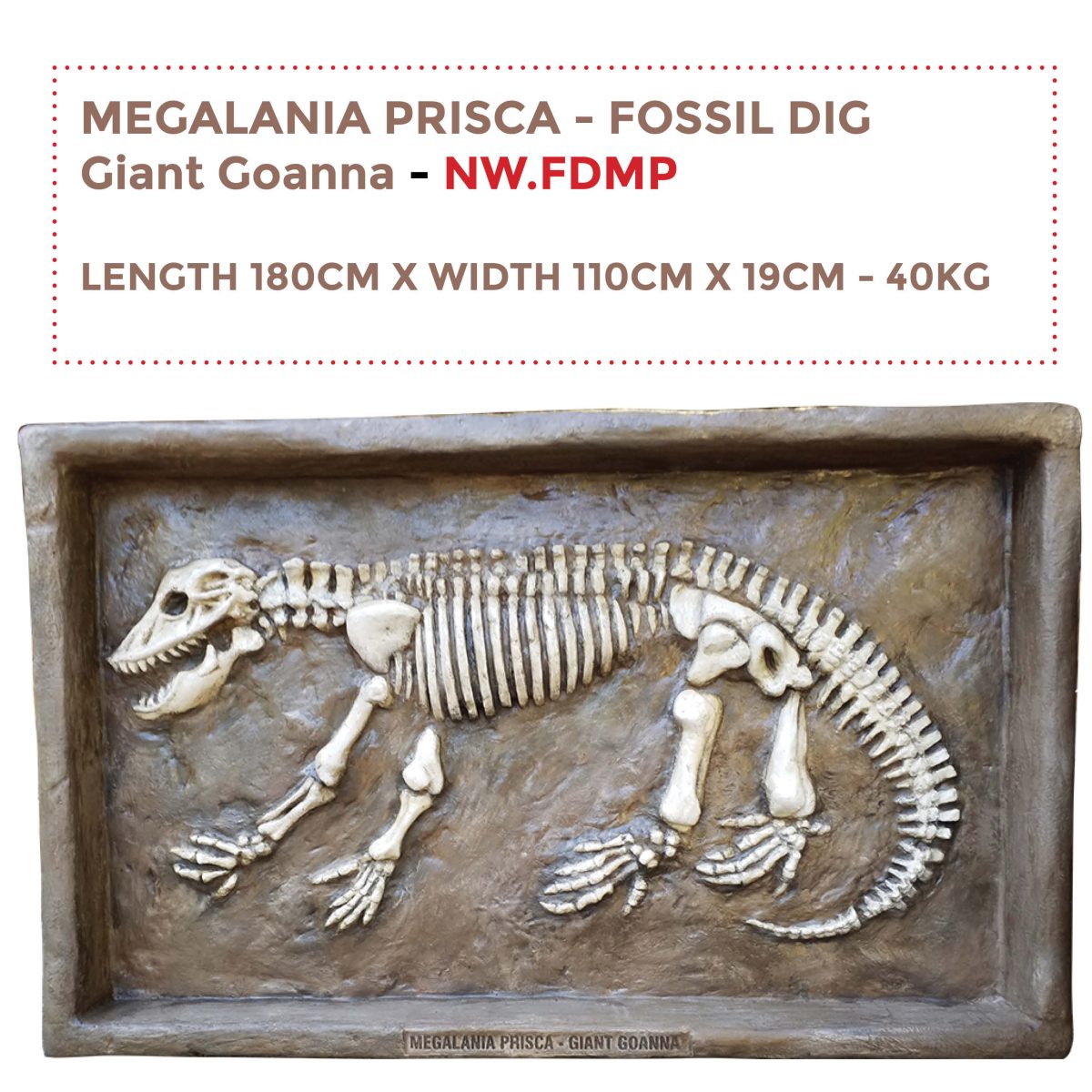
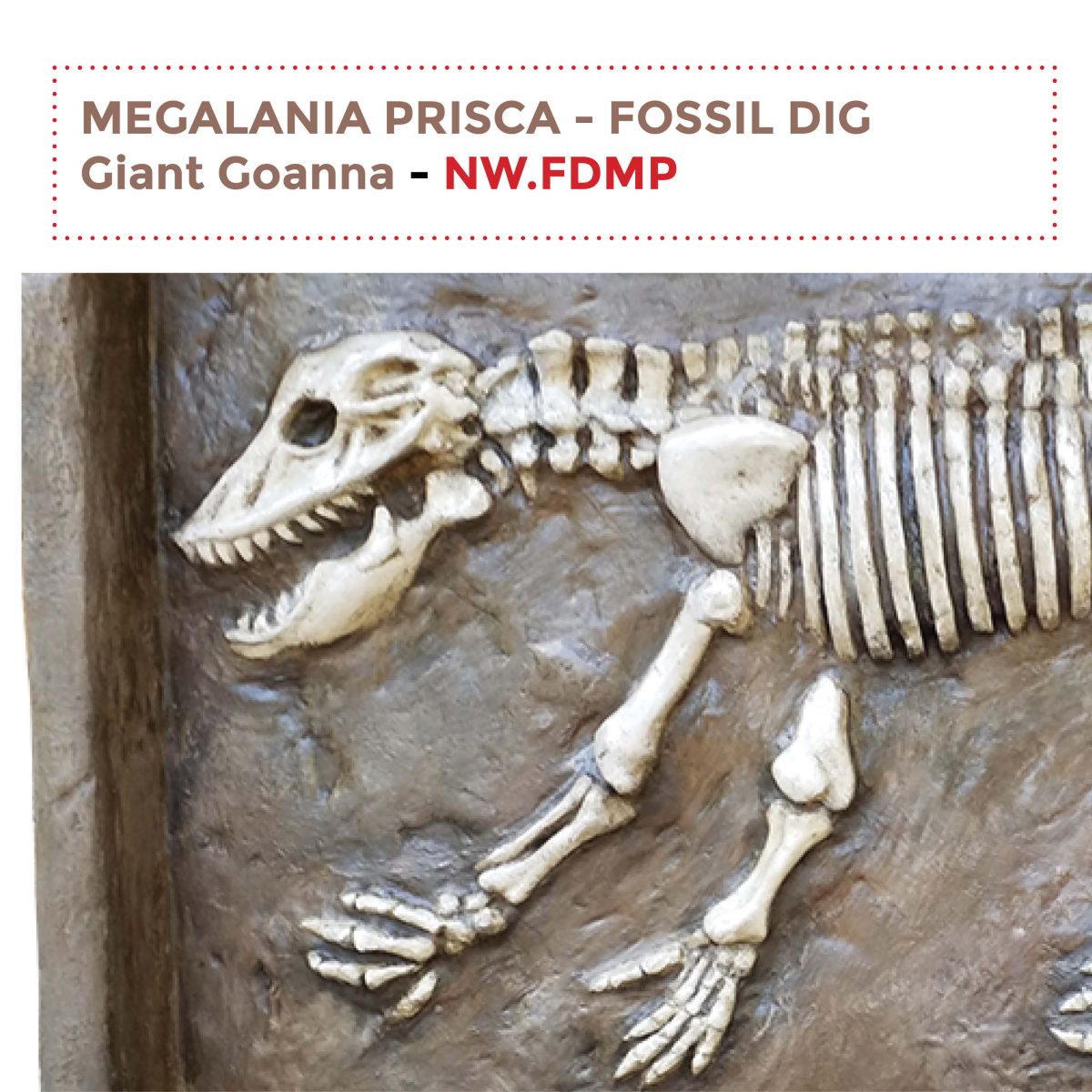


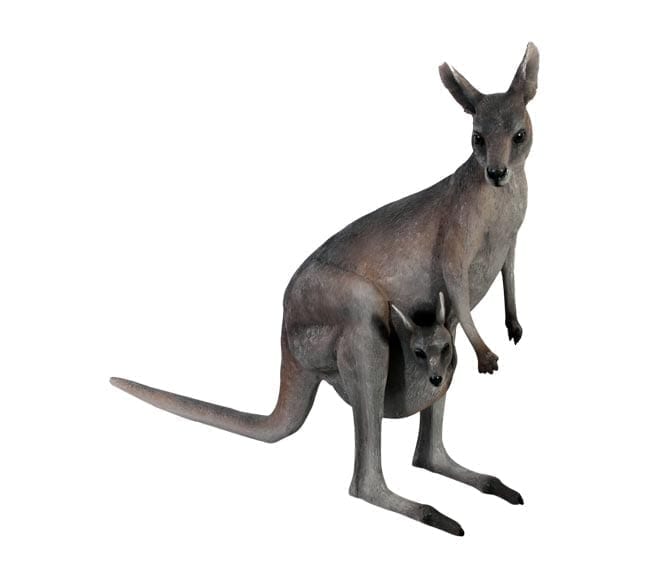

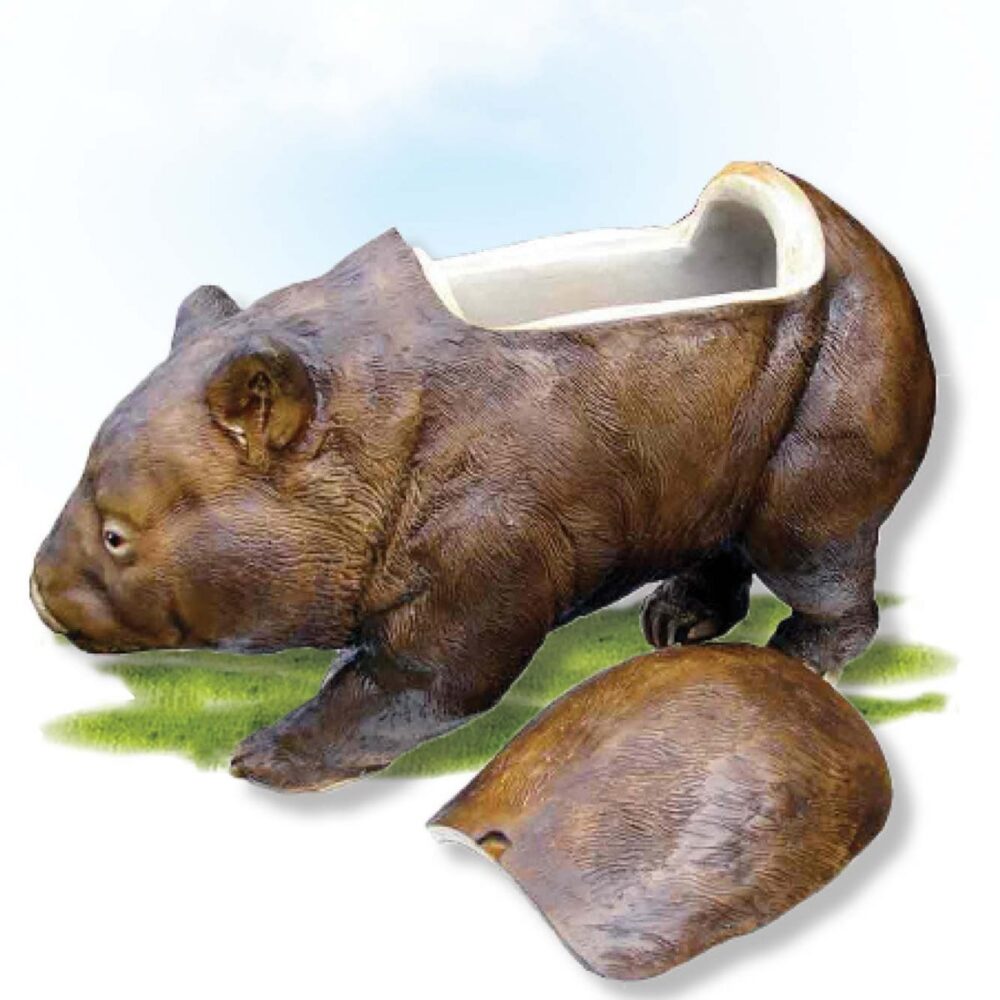


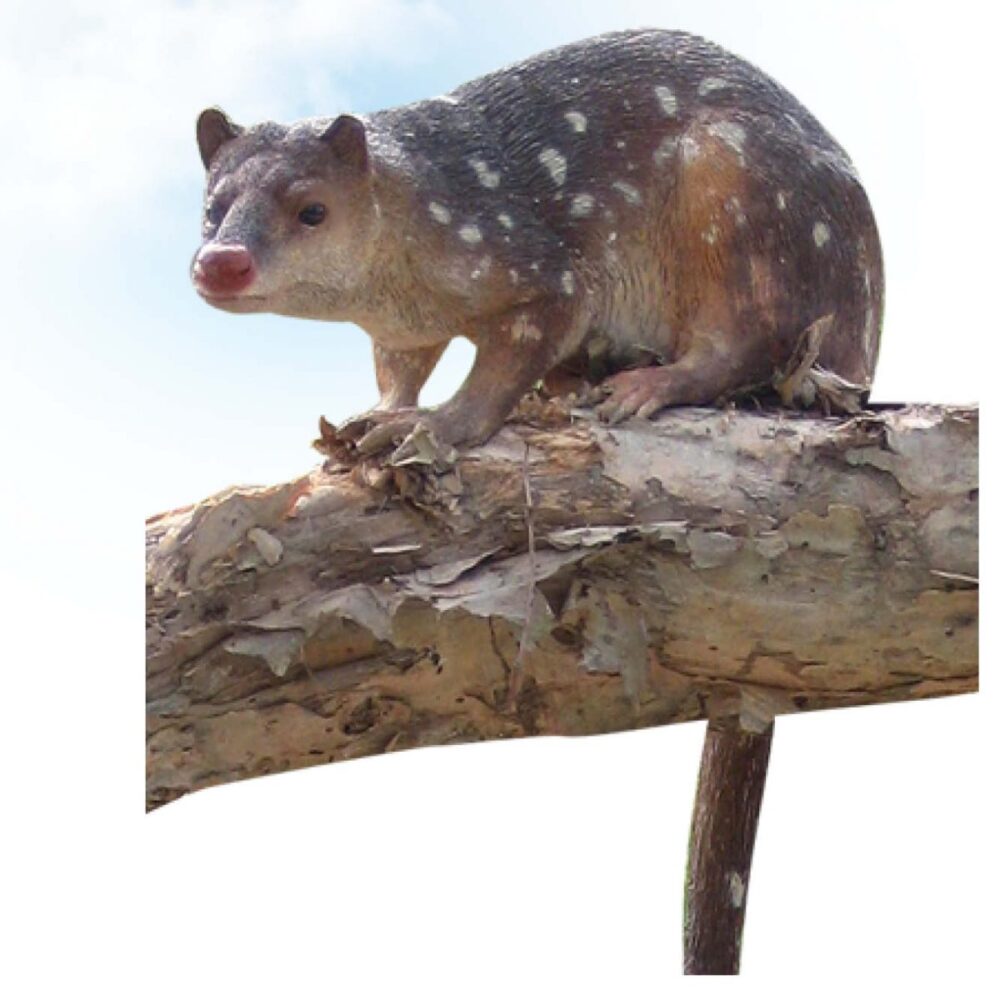
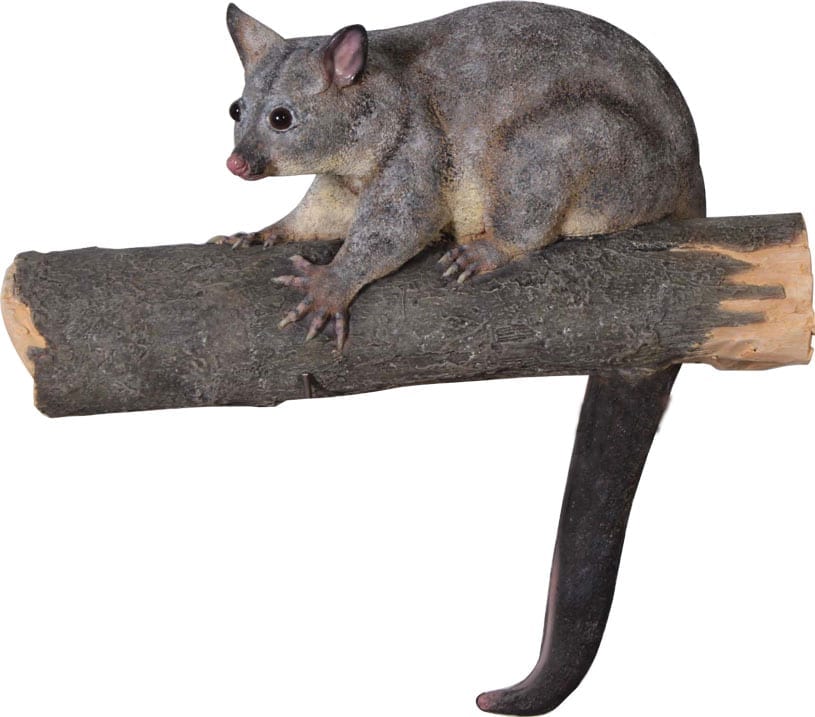

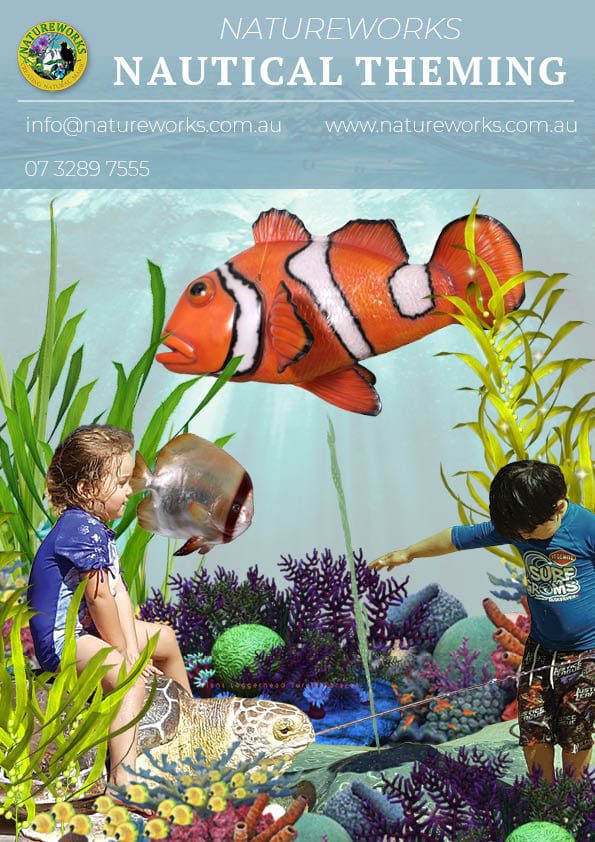
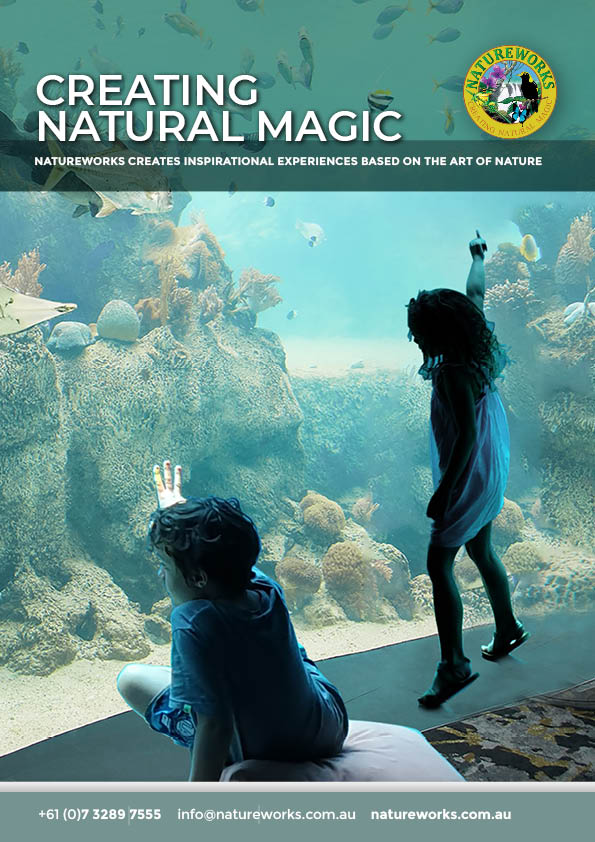
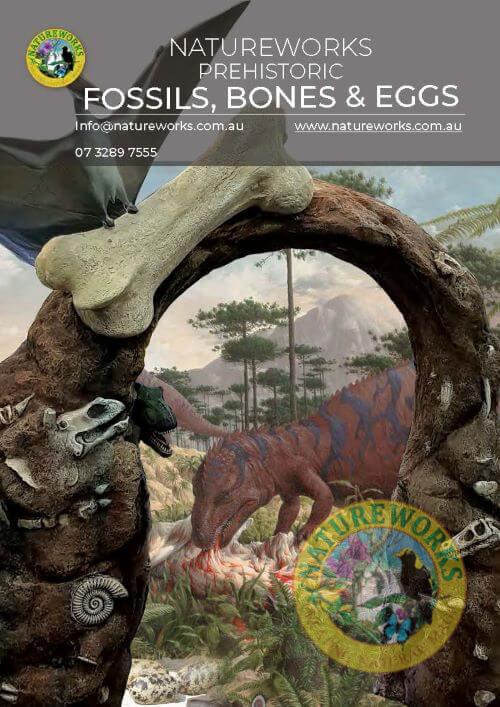

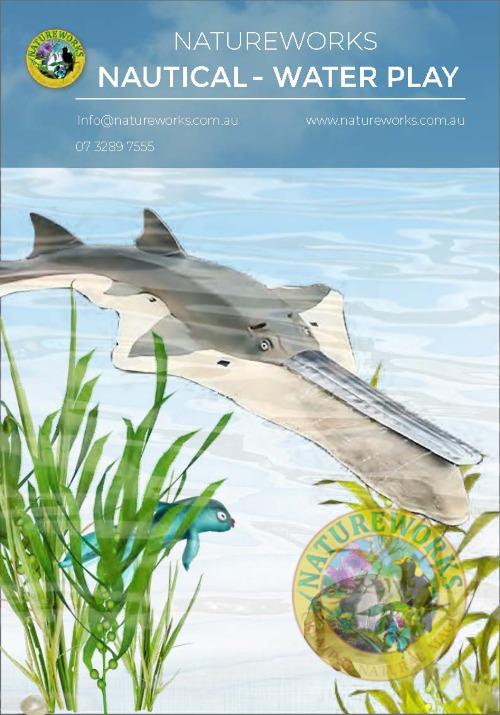

Reviews
There are no reviews yet.